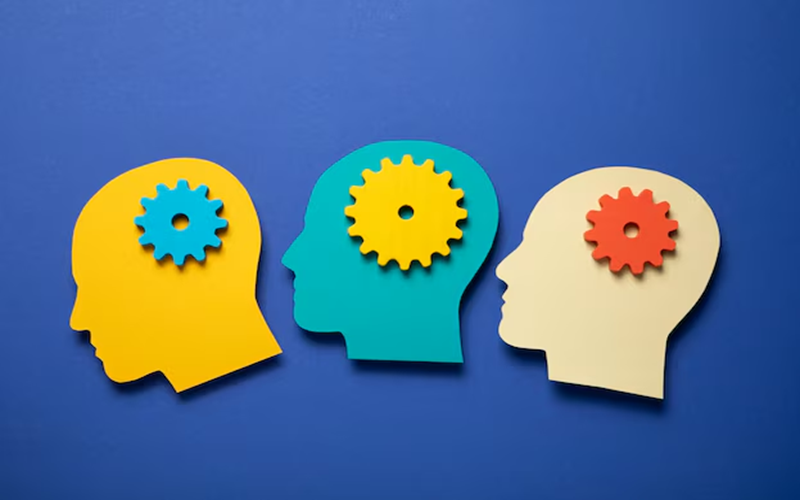How Human Brains Process Received Information
The human experience is fundamentally shaped by the flow of information from the external world into our brains. Our senses – sight, hearing, touch, taste, and smell – are constantly collecting data that must be interpreted and organized to create a coherent understanding of our environment. This intricate process, far from being passive, involves active engagement, filtering, and transformation of raw sensory data into usable knowledge.
How does a Human brain process information?
The human brain processes information through a complex network of specialised cells called Neurons. Neurons communicate with each other through electrical impulses and signals. When a human being receives a sensory input, such as seeing, hearing, or feeling something, their brain triggers a series of events and sends it to the sensory receptors. This latter distributes it between the different Neuron channels which will collaborate with each other to realise it. Let’s clarify this in more details. A human being decides to complete a task, e.g. to buy a pair of trainers. The brain takes this piece of information and segments it into a series of tasks and assigns each task to a channel of Neurons. Each Neuron collects the data it needs to complete its assignment and transmits the task to another Neuron. In the end, the brain collects and integrates completed tasks and transmits the information and coordinates a response.
The human brain is a remarkable information processor, constantly bombarded with sensory data that it must transform into meaningful perceptions, thoughts, and actions. This paper explores the multifaceted ways in which the brain processes received information, from the initial stages of sensory encoding to higher-level cognitive functions. We will examine key processes such as sensory transduction, attention, perception, memory, and language, highlighting the complex interplay between neural structures and cognitive processes that enable us to make sense of the world around us. Through understanding these mechanisms, we gain deeper insight into the brilliance and limitations of human cognition.
2. Sensory Transduction and Early Processing:
The journey of information processing begins with sensory transduction, where physical stimuli (light waves, sound vibrations, pressure, chemicals) are converted into electrical signals that the brain can understand. Each sense has specialised receptors that perform this crucial function:
- Vision: Photoreceptors in the retina convert light into neural signals, which travel through the optic nerve to the visual cortex.
- Audition: Hair cells in the cochlea convert sound waves into neural signals, which are processed in the auditory cortex.
- Somatosensation: Mechanoreceptors, thermoreceptors, and nociceptors in the skin and body tissues detect touch, temperature, and pain, respectively, sending signals to the somatosensory cortex.
- Gustation: Taste buds on the tongue detect chemicals, sending signals to the gustatory cortex.
- Olfaction: Olfactory receptors in the nasal cavity detect airborne molecules, sending signals to the olfactory cortex.

At this early stage, primary sensory cortices begin to process basic features of the information. For instance, the visual cortex identifies lines, edges, and colors, while the auditory cortex processes frequencies and timbres. This initial processing is largely automatic and unconscious.
3. The Role of Attention:
The brain is constantly bombarded with vast amounts of sensory information. To prevent overload, attention acts as a selective filter, focusing on information that is deemed relevant while disregarding the rest. Attention can be:
- Selective: Choosing to focus on specific stimuli while ignoring others (e.g., focusing on a conversation amidst background noise).
- Sustained: Maintaining focus on a particular stimulus or task over a period of time (e.g., reading a book).
- Divided: Attending to multiple stimuli or tasks simultaneously (e.g., listening to music while driving).
Neural processes underlying attention involve networks in the frontal and parietal lobes that modulate activity in sensory cortices, enhancing the processing of attended information while suppressing the processing of irrelevant stimuli.
4. Perception: Constructing a Meaningful Reality:
Raw sensory signals are not meaningful on their own; they must be organized and interpreted to create perceptions. Perception involves:
- Gestalt Principles: The brain tends to organize sensory information into meaningful wholes, following principles such as proximity, similarity, and closure.
- Top-Down Processing: Prior knowledge, expectations, and context influence how we perceive sensory data.
- Bottom-Up Processing: Perception also relies on sensory information itself, starting from basic features and building to more complex perceptions.
Perception is an active process of constructing interpretations based on both sensory data and existing schemas. It allows us to recognize objects, identify faces, and understand spatial relationships.
5. Memory: Encoding, Storage, and Retrieval:
Received information that is deemed important is often encoded into memory, allowing for later retrieval. Memory processes can be categorized as follows:
- Sensory Memory: A very short-term storage that briefly holds sensory information.
- Short-Term/Working Memory: Information held temporarily while it is being actively used.
- Long-Term Memory: Long-lasting storage of information, including:
- Explicit (Declarative) Memory: Conscious recall of facts and events.
- Implicit (Non-Declarative) Memory: Unconscious memory for skills, habits, and conditioning.
The hippocampus plays a critical role in forming new explicit memories, while other brain structures like the amygdala (emotional memories) and cerebellum (motor memories) are involved in other aspects of memory processing.
6. Language Processing: From Sounds to Meaning:
For humans, language is a crucial channel for receiving and conveying information. This involves:
- Phonological Processing: Processing the sounds of language.
- Lexical Processing: Recognizing individual words and accessing their meaning.
- Syntactic Processing: Understanding the structure and grammar of sentences.
- Semantic Processing: Interpreting the overall meaning of language.
Language processing involves complex neural networks in the left hemisphere, primarily Broca’s area (speech production) and Wernicke’s area (language comprehension).
7. Higher-Level Cognition and Integration:
The brain ultimately integrates processed information from various sources to form higher-level cognitive functions such as:
- Reasoning and Problem-Solving: Using logic and knowledge to make decisions and overcome challenges.
- Decision Making: Weighing options and choosing courses of action.
- Planning: Devising strategies to achieve goals.
- Emotional Processing: Attaching emotional significance to information and experiences, primarily through the limbic system.
These complex functions rely on interconnected neural networks spanning the prefrontal cortex, parietal lobes, and other brain regions.






8. Individual Differences and Plasticity:
It’s important to acknowledge that brain processing is not uniform across individuals. Differences in genetics, experiences, and learning all contribute to variations in how we perceive and process information. Moreover, the brain demonstrates remarkable plasticity, the ability to reorganize itself in response to experience. This plasticity allows us to learn new skills, adapt to changing environments, and even recover from brain damage.
9. Conclusion:
The human brain’s processing of received information is a remarkable feat of biological engineering and cognitive sophistication. From the initial conversion of sensory stimuli to the complex integration of data into meaning, language, and memory, every step is a testament to the brain’s efficiency and adaptability. By continuing to explore the neural mechanisms and cognitive processes underlying this intricate system, we can deepen our understanding of human consciousness, behavior, and the very essence of how we interact with the world around us.
Further Research:
- This paper provides a broad overview. Future avenues of research could explore:
- The role of artificial intelligence in modeling and enhancing human information processing.
- Specific neural circuits involved in different aspects of information processing.
- Impact of neurological disorders on information processing.
- Developmental changes in brain processing across the lifespan.